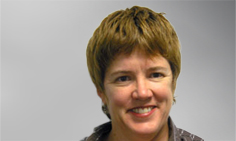CONTROVERSY exists about the benefits and harms of population-based mammographic screening.
For individual women, reducing the risk of dying from breast cancer must be weighed up against the potential harm of a diagnosis of a breast cancer that would not become apparent in the woman’s lifetime (overdiagnosis).
A recent ecological study, published in JAMA Internal Medicine, of 16 million women living in 547 US counties assessed the association between the proportion of women screened in each county and rates of breast cancer incidence and mortality.
The proportion screened was not associated with breast cancer mortality but was associated with an increase in the incidence of small breast cancers (≤ 2 cm diameter) with no change in the incidence of larger cancers. The authors concluded that the findings reflected widespread overdiagnosis.
The results of the US study should be viewed with caution. Ecological studies compare breast cancer incidence and mortality between areas or countries with different levels of screening participation, or in the same area before and after screening was introduced.
Results vary due to unmeasured differences in other breast cancer risk factors such as access to treatment as well as other assumptions. Similarly, estimates of overdiagnosis from ecological studies are unreliable because of a number of untestable assumptions.
In fact, the Independent UK Panel on Breast Cancer Screening found estimates of overdiagnosis based on the same data varied from 0% to 36% depending on the assumptions and statistical models used.
Randomised controlled trials (RCTs) of mammographic screening provide the highest quality evidence regarding the effects of screening on mortality and the frequency of overdiagnosis. However, most trials were conducted decades ago and screening technologies and breast cancer treatment have changed radically.
In the absence of RCTs, cohort and case–control studies provide the best evidence of mortality benefit and overdiagnosis because they measure whether an individual woman was screened and link this to whether she died of breast cancer.
Case–control studies conducted in Australia and other countries consistently report a 49% reduction in breast cancer mortality.
Some researchers have argued that these results are biased because of differences in breast cancer risk factors between screened and unscreened women.
With other colleagues from the Melbourne School of Population and Global Health, University of Melbourne, we tested whether this potential problem would affect results in a case–control study funded by the NHMRC, and showed that this was unlikely.
An Australian case–control study of overdiagnosis estimated that 8% of invasive cancers and 14% of all cancers (ductal carcinoma in situ and invasive) detected at screening were overdiagnosed.
I am currently involved in a study of overdiagnosis in the Western Australian screening program, funded by the NHMRC, which will shed further light on this complex issue.
So what does this mean for women, clinicians and policymakers?
There is strong evidence to support a mortality benefit such that women who participate in screening approximately halve their risk of dying of breast cancer.
In relation to overdiagnosis the evidence is less certain, with 14% being the best Australian estimate.
A qualitative study of Australian women published in The BMJ found that if women were told that overdiagnosis was up to 30% most would still participate in screening. However, many women said that knowledge of the extent of overdiagnosis might affect whether they chose to have treatment or monitor their tumour (watchful waiting).
We have been remiss in informing women about the potential benefits and harms of mammographic screening. A study published in PLOS One showed that only 10% of Australian women were told about overdiagnosis when they were screened.
It is up to clinicians and the BreastScreen program to provide women the most up-to-date evidence so that they can make informed decisions about whether to be screened.
Professor Anne Kavanagh is the head of the Gender and Women's Health Unit at the Centre for Health Equity, Melbourne School of Population and Global Health, University of Melbourne.

 more_vert
more_vert
Seems breast and prostate screening share the same problem of overdiagnosis and possible harm.
The other issue is the oppourtunity lost to get better value elsewhere, reducing waiting lists by providing beds and addressing the appalling access block for emergency admission patients that plagues our public hospitals, and kills about 1000 patients a year.
I think that mammography was an alliance between feminist politics and bad science, now we are stuck with it.
A study mentioned in News in Brief, suggests a comparable benefit from a Mediterranean diet plus olive oil.
Harms from screening considers overdiagnosis- what about radiation from repeated mammograms? Or a sometimes false sense of security? Just asking!